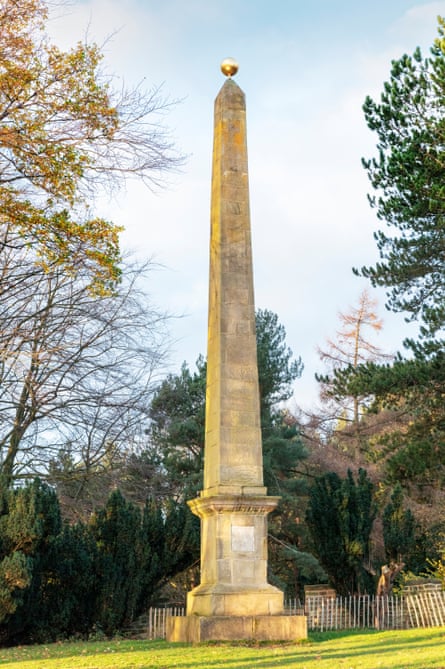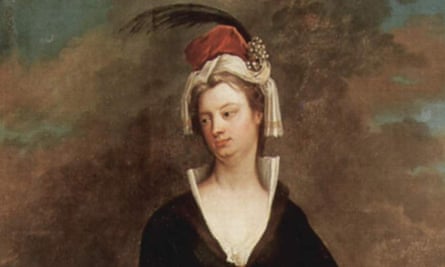It is a monument that celebrates the achievements of someone who would, her supporters say, be far better known if she had been a man.
But now a 300-year-old obelisk is being given one of England’s highest listings because of the remarkable story it tells of an overlooked medical pioneer.
Mary Wortley Montagu was an English aristocrat whose drive and daring helped save countless lives. In the early 1720s, she introduced smallpox inoculation to Britain, saving many lives and helping to pave the way for Edward Jenner’s vaccine 75 years later.

The obelisk, known as the Sun Monument, was erected in the early to mid 18th century in the gardens of Wentworth Castle, South Yorkshire, probably on the instructions of William Wentworth, the second Earl of Strafford.
Since 1968 it had been Grade II-listed but will now be upgraded to Grade II*. That means it is of more than special interest, with only 5.8% of listed buildings being given the grade.
Sarah Charlesworth, the listing team leader for the north, said the primary aim of the relisting was to help make the story of Lady Wortley Montagu – “one of the overlooked heroines in the history of medicine” – better known. Like most people, Charlesworth had been unaware of Wortley Montagu. “She has been largely forgotten … but she did things that were really quite amazing. She was progressive and ahead of her time.”
The obelisk is highly unusual in that it was “dedicated to a woman who was not part of the family and not royalty, which was unheard of”. Wortley Montagu, who educated herself, was the wife of the politician and diplomat Edward Wortley Montagu.
She was described by her contemporary Joseph Spence as “one of the most extraordinary characters in the world”, who was “irregular and always wandering” and shone “like a comet”.
In her lifetime smallpox epidemics were frequent and deadly, and her 20-year-old brother died from the disease. Wortley Montagu also contracted smallpox but survived, although she was left with facial scars.
It was during her husband’s spell as British ambassador to the Ottoman royal court in Constantinople that she witnessed the local method of inoculating against smallpox, which involved deliberately giving people a tiny dose of the disease.

The inoculation was a common practice and a reason death rates were so much lower in Turkey than in countries like Britain. After looking into the practice with Charles Maitland, the British embassy’s surgeon, she took the bold decision to have the procedure carried out on her five-year-old son by a skilled local woman.
after newsletter promotion
In 1721, back in London, another smallpox epidemic was raging and Wortley Montagu persuaded Maitland to inoculate her daughter. She then used her daughter’s speedy recovery and immunity to promote the practice.
“She really championed the cause but she received a lot of flak for it,” said Charlesworth. “People were generally against it and it was seen as being anti-religion. And she was a woman – people said they weren’t going to listen to a woman, that kind of attitude. She really had to fight but she did manage to get the word out there and a lot of people were inoculated as a result.”
Two of King George I’s granddaughters were among those who were treated and historians have speculated that the Earl of Strafford may have been inoculated as a child since his parents were neighbours to Wortley Montagu in Twickenham.
While inoculation was generally successful, it remained controversial and contained an element of risk. From the late 18th century, Jenner’s vaccination for smallpox derived from cowpox, a similar but much less virulent disease, began to replace it.
Wentworth Castle Gardens are today in the care of the National Trust. The site’s general manager, Torri Crapper, said they were delighted that the Sun Monument was getting fresh recognition. “It’s such a prominent feature in the landscape,” she said. “Wentworth Castle Gardens is home to no fewer than 26 listed buildings and monuments, each of them with a different tale to tell.
“Lady Mary’s story is such an important part of history that deserves to be told, and that we are proud to share with our visitors.”










